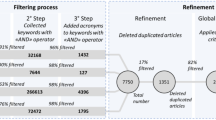Abstract
There is an increasing interest in performing assembly of microsystems (i.e., non-destructive transportation, precise manipulation, and exact positioning of microcomponents) by flexible mobile microrobots which provide the necessary accuracy. The spectrum of tasks in microassembly ranges from simple preparatory operations like applying adhesives, drawing adjustment marks, cleaning objects, to the performance of the final assembly and inspection of the finished microsystem. An automated microrobot based microassembly desktop station (MMS) may offer the desired features and versatility. The main problems of realizing an MMS are intelligent assembly planning on the uppermost control level and task-specific allocation of assembly operations to robots and tools to allow the assembly process to be free of error and collision. The basis functions are described for the MMS that is being developed at the University of Karlsruhe. After discussing microassembly planning in an MMS a common microassembly model is introduced, based on geometric reasoning. For all planning steps – the generation of feasible assembly sequences, selection of the best assembly plan and allocation of the assembly operations to the robots employed by an MMS – a detailed description of the algorithms is presented, so they can be used by the practitioner. Finally, the general structure of a microassembly planning system of an MMS is introduced and the function of each system level is explained.
Similar content being viewed by others
References
Fatikow, S. (1996) An automated micromanipulation desktop-station based on mobile piezoelectric microrobots, in Proceedings of SPIE International Symposium on Intelligent Systems and Advanced Manufacturing, Boston MA, November, pp. 66–77.
Fatikow, S. and Rembold, U. (1996) An automated microrobot-based desktop station for microassembly and handling of microobjects, in Proceedings of IEEE Conference on Emerging Technologies and Factory Automation, Kauai, Hawaii, November, pp. 586–592.
Fatikow, S., Magnussen, B. and Rembold, U. (1995) A piezo-electric mobile robot for handling of microobjects, in Proceedings of the International Symposium on Microsystems, Intelligent Materials and Robots, Sendai, September, pp. 189–192.
Frick, O. (1994) Robots for the precision engineering industry, in Proceedings of the International Symposium on Industrial Robots, Hanover, April, IFR pp. 621–626.
Gengenbach, U. (1996) Automatic assembly of microoptical components, in Proceedings of SPIE International Symposium on Intelligent Systems and Advanced Manufacturing, Boston MA, November, pp. 141–150.
Hara, I. and Nagata, T. (1993) Robot assembly planning using contract nets, in Proceedings of IEEE International Conference on Intelligent Robots and Systems, Yokohama, July, pp. 1971–1976.
Homem de Mello, L. S. and Sanderson, A. C. (1990) AND/OR graph representation of assembly plans. IEEE Transactions on Robotics and Automation, 6, 188–199.
Homem de Mello, L. S. and Sanderson, A. C. (1991a) A correct and complete algorithm for the generation of mechanical assembly sequences. IEEE Transactions on Robotics and Automation, 7, 228–240.
Homem de Mello, L. S. and Sanderson, A. C. (1991b) Two criteria for the selection of assembly plans, maximizing the flexibility of sequencing the assembly tasks and minimizing the assembly time through parallel execution of assembly tasks. IEEE Transactions on Robotics and Automation, 7, 626–633.
Huang, K.-I. (1993) Development of an assembly planner using decomposition approach, in Proceedings of IEEE International Conference on Robotics and Automation, Atlanta GA, May, pp. 63–68.
Joneja, A. and Chang, T. (1992) Automatic design of fixture assemblies: representation and planning, in Proceedings of IFAC Workshop on Intelligent Manufacturing Systems, Dearborn MI, October, pp. 120–124.
Kokkinaki, A. I. and Valavanis, K. P. (1995) On the comparison of AI and DAI based planning techniques for automated manufacturing systems. Journal of Intelligent and Robotic Systems, 13, 201–245.
Kokkinaki, A. I. and Valavanis, K. P. (1996) A distributed task planning system for computer-integrated manufacturing systems. Journal of Intelligent Manufacturing, 7, 293–309.
Lee, S. and Shin, Y. G. (1993) Assembly coplanner: co-operative assembly planner based on subassembly extraction. Journal of Intelligent Manufacturing, 4, 183–198.
Magnussen, B. (1996) Infrastruktur für steuerungs-und regelungssysteme von robotischen miniatur-und mikro-greigern, Dissertation, Universität Karlsruhe, Fakultät für Informatik, Karlsruhe.
Magnussen, B., Fatikow, S. and Rembold, U. (1995) Actuation in microsystems: problem field overview and practical example of the piezoelectric robot for handling of micro-objects, in Proceedings of INRIA/IEEE Conference on Emerging Technologies and Factory Automation, Paris, Oc tober, pp. 21–27.
Rajan, V. N. and Nof, S. Y. (1996) Minimal precedence con-straints for integrated assembly and execution planning. IEEE Transactions on Robotics and Automation, 12, 175–186.
Author information
Authors and Affiliations
Rights and permissions
About this article
Cite this article
Fatikow, S., Munassypov, R. & Rembold, U. Assembly planning and plan decomposition in an automated microrobot-based microassembly desktop station. Journal of Intelligent Manufacturing 9, 73–92 (1998). https://doi.org/10.1023/A:1008851409235
Issue Date:
DOI: https://doi.org/10.1023/A:1008851409235




